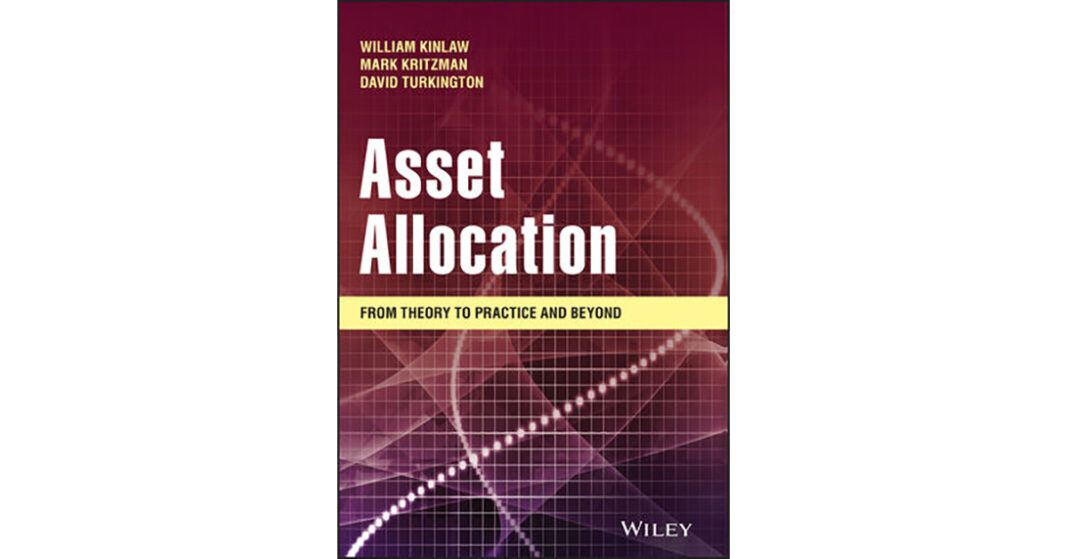Asset Allocation: From Theory to Practice and Beyond, Second Edition. 2021. William Kinlaw, CFA, Mark Kritzman, CFA, and David Turkington, CFA. Wiley.
To build a robust investment process, asset allocators must address a long list of issues, including:
- which assets to choose,
- how to forecast risk and return, and
- how to manage currency risk.
William Kinlaw, CFA, Mark Kritzman, CFA, and David Turkington, CFA, offer advice on these and a wide range of other topics in asset allocation, backing up their recommendations with solid quantitative analysis. Along the way, they dispel a few myths and tackle some of the most challenging aspects of investing.
The authors identify seven essential characteristics of every asset class:
- Their composition must be stable (not static).
- They are directly investable.
- The components are similar to one another.
- The asset class is dissimilar to other asset classes.
- Investing in the asset class raises the expected utility of the portfolio.
- Selection skill is not a requirement for investing.
- Investors can access the asset class in a cost-effective way.
(I would add an eighth: Investors must be able to come up with credible forecasts of return, risk, and correlations to other assets, to implement inclusion in an optimization process. This requirement would exclude, for example, cryptocurrencies.)
What do these criteria mean in practice? Global equities are not internally homogeneous and therefore cannot be considered a single asset class. Instead, the authors identify three equity asset classes: domestic equities (meaning US equities for the authors), foreign developed market equities, and foreign emerging market equities. Excluded from the authors’ defined asset classes are art (not accessible in size), momentum stocks (unstable composition), and — more unconventionally — high-yield bonds, which are not externally heterogeneous because they are similar to investment-grade bonds and therefore form part of the corporate bond asset class.
Ironically, the first myth that the book tackles is the importance of asset allocation. A much-cited 1986 article by Gary P. Brinson, L. Randolph Hood, and Gilbert L. Beebower found that asset allocation determines more than 90% of performance. This book argues, however, that the methodology of that study is flawed because it assumes a starting point of an uninvested portfolio. In practice, the authors show, once investors have made the decision to invest, asset allocation and security selection are likely to be equally important (depending, of course, on the investment approach taken). “In the absence of any skill, effort, or careful consideration,” they write, “investors can simply default to a broadly diversified portfolio such as 60–40 stocks and bonds.”
The outputs from mean–variance optimizers are hypersensitive to small changes in inputs. Yet the authors dispel the myth that this sensitivity leads to error maximization. It is true that small changes in estimates between assets with similar risk and return characteristics can lead to big shifts in allocations between them. Because the assets in question are close substitutes, however, these reallocations have little impact on the portfolio’s return distribution. By contrast, pronounced sensitivity to changes in inputs is not observed with assets that have dissimilar characteristics. In particular, small changes in estimates for equities and bonds do not lead to large swings in the optimal allocation between them.
Asset Allocation covers all the key ingredients of its subject, such as forecasting returns, optimization, and currency hedging. The chapter on rebalancing provides a good flavor of what practitioners will find: a mix of detailed quantitative analysis and practical advice, with scope to draw one’s own conclusions. Investors must evaluate the trade-off between the cost of rebalancing their portfolios to target against the cost of sticking with a suboptimal mix. A section on a dynamic programming methodology concludes that this approach is computationally impossible. The authors then present an optimal rebalancing methodology, the Markowitz–van Dijk heuristic approach. Its costs (5.4 bps) are compared with the costs for calendar-based rebalancing (5.5 bps to 8.9 bps), tolerance band rebalancing (5.8 bps to 6.9 bps), and no rebalancing (17.0 bps). This detailed analysis supports a simpler conclusion for those of us who deal with individual clients, for whom behavioral biases present the biggest threat to long-term success: Have a long-term plan, rebalance your portfolio to that plan, but don’t trade too often.
The book presents high-level quantitative analysis to explore some of the most challenging aspects of asset allocation. For example, the authors assess the probability of forward-looking scenarios using a technique originally developed by Indian statistician P.C. Mahalanobis to characterize human skulls. They employ a hidden Markov model to develop a regime-shifting approach. Additionally, they identify the fundamental drivers of stock–bond correlations using statistically filtered historical observations.
Notwithstanding its reliance on such sophisticated techniques, this new edition of Asset Allocation is accessible to those of us who work with quant teams rather than in them. Each chapter offers a stand-alone analysis of one of 24 aspects of asset allocation. I find myself regularly returning to this book for its framing of the issues I face, the authors’ analysis, and their concise presentation of the bottom line.
If you liked this post, don’t forget to subscribe to the Enterprising Investor.
All posts are the opinion of the author. As such, they should not be construed as investment advice, nor do the opinions expressed necessarily reflect the views of CFA Institute or the author’s employer.
Professional Learning for CFA Institute Members
CFA Institute members are empowered to self-determine and self-report professional learning (PL) credits earned, including content on Enterprising Investor. Members can record credits easily using their online PL tracker.



